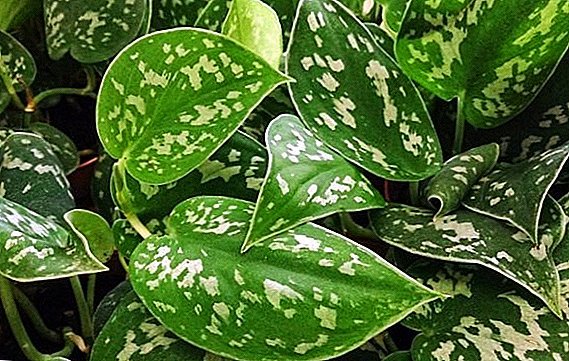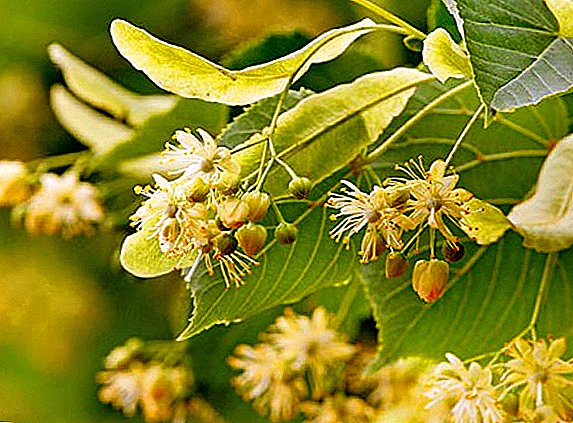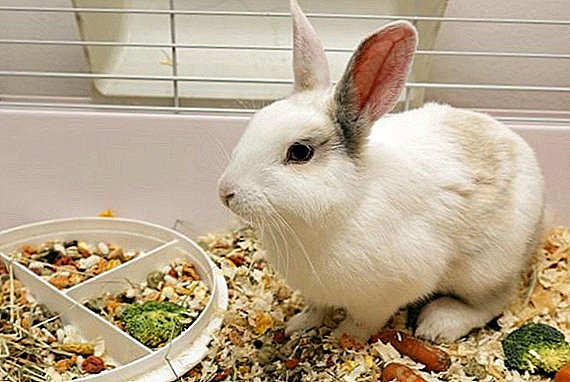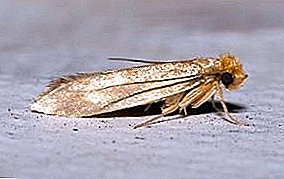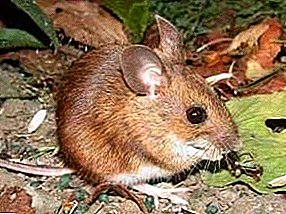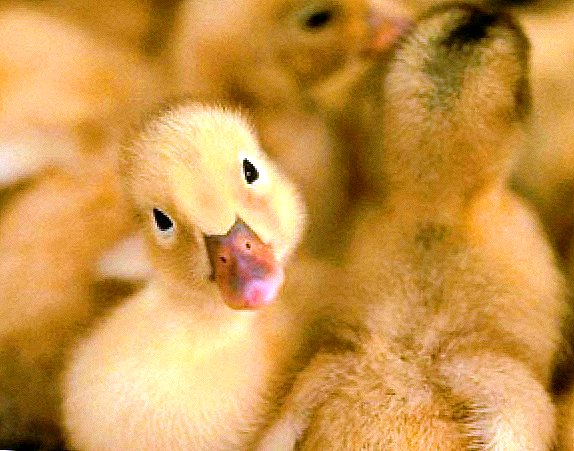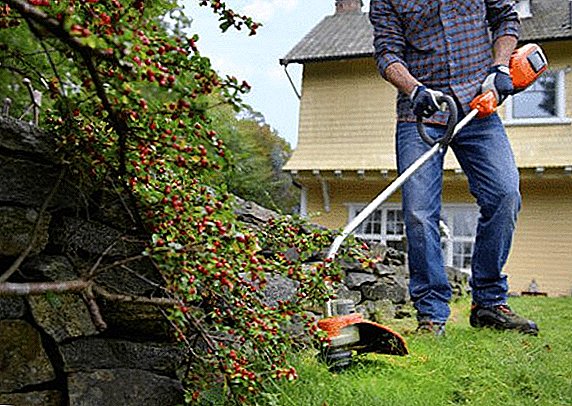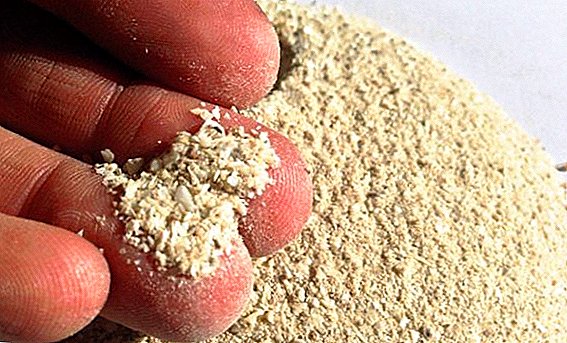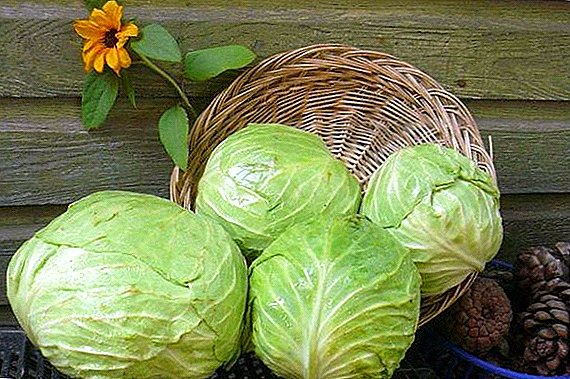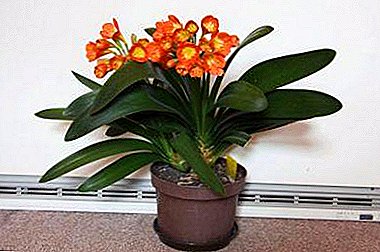
Clivia is a tropical plant that is particularly popular among gardeners. It has delicate leaves of dark green color and flowers that look like lilies.
It is the bright appearance of the plant that attracts special attention to it. The plant differs from other representatives of Amaryllis plants by the absence of a bulb. Clivia has a superficial rhizome, which is why it is considered inferior. In our article you can get acquainted with the species by viewing photos of the plant, as well as learn about the rules of home care for cleavia.
What is this houseplant?
The main difference of clivia from other representatives of the Amaryllis plants to which it belongs is the absence of the bulb. Its place is taken by a superficial rhizome, from which a stem of dense and fleshy leaves is formed. That is why rhizome clivia can not be called complete.
Home clivia, unlike the wild, can reach only half a meter in height. Along the length of the entire stem, there are elongated dark green leaves that do not have a central vein. There can be 10–13 flowers of small size and orange-yellow color on the peduncle (depending on the clivia variety). When a fleshy leaf is cut, a liquid of the same color as the flowers will flow out of it.
Beneficial features
According to many beliefs and signs, clivia is a plant that can help in teaching science, improving concentration and increasing the efficiency of the brain. Finding this plant in the house will help to arouse curiosity and craving for new knowledge in a person.
Also Clivia contributes to the harmonization of the emotional state of a person: he becomes softer and kinder, less likely to show negative emotions (for example, extreme irritability or vulnerability).
Virulence
Despite the beautiful appearance in which the bright flowers of clivia attract first and foremost, this is a poisonous plant. First of all, it is necessary to keep the plant where children and animals cannot get to it, because ingestion of a very small amount of juice from clivia leaves can cause:
- vomiting;
- diarrhea;
- abdominal pains of varying degrees;
- sometimes even paralysis.
Needless to say, what can happen if a child or an animal eats a piece or a flower in whole or even a small part of it.
Views and photos
Clivia has a very small number of species differing from each other in ways of adapting to different conditions, size, color. Currently, according to most sources of plant species, there are only 5 - 7. Also, new varieties of different colors are being developed now. The following types of hobby are especially popular among fans of domestic plants:
Cinnabar (Miniata, Orange)

One of the most common types that are grown at home. Clavaria clivia can reach a height of 50 cm. Dark green leaves have a belt-like shape and are up to 60 cm long. The end of the peduncle is crowned with red-orange flowers, shaped like a funnel. Their number can vary from 10 to 30 pieces.
The main reason for its popularity is the ability to adapt to any indoor conditions, rapid adaptation to them and the requirement of almost minimal care. If the plant is in a room where there is enough light, then it will bloom anyway.
The flowering period of cinnabar clivia begins in February and ends in April or May, those. the whole cold period, she will delight with its bright colors. Also, for its transplantation, no special and difficult manipulations are required: as soon as the roots are seen, the earthen room needs to be transferred to another pot.
This procedure is carried out each time after clivia fades away (if the plant is young), or once every 2 - 3 years (if the plant is old). With the help of this sort of clivia, others are displayed with different colors.
Beautiful (Nobilis, Noble)

This species differs from all the others in its small size: The maximum height of a clivia beautiful can reach only 30 cm, but some specimens of this species can grow a little higher.
On the peduncle, which rises above the stem, formed from leaves, shaped like a sword, up to 50 flowers of pale orange or orange flowers with a slight pink tinge can be placed. Also, it differs from all other clivia species in its beautiful, rather curved perianth. Homeland of this species is Cape Province in South Africa.
Gardena

Clive of Gardena, like Clivia of Kinovar, can grow up to 50 cm in length. The leaves also have a belt-like shape 2.5 - 4 cm wide with a characteristic narrowing at the end. On the peduncle 45 - 50 cm long. 10 - 16 narrow flowers may appear; their petals, about 3 cm in length, form an uneven bell. The flowering period of Clivia Gardens occurs mainly in the winter, rather than in the spring.
This species came to us from the foothills of the Transvaal in South Africa.
Home care
Temperature
Almost every season for successful cultivation has its own optimum temperature regime:
- Winter - spring (flowering period) - from 20 to 25 degrees.
- Summer - from 20 to 25 degrees.
- Autumn - winter (rest period) - from 12 to 15 degrees.
Shine
Clivia is a light-loving plant that is best placed where sunlight is scattered, because direct sunlight can cause burns on the leaves. It is especially important that the light was enough during the flowering period of clivia (February - May), otherwise the plant will not please you with beautiful and bright colors.
Watering
In summer, it is necessary to water the clevius as soon as it is noticeable that the upper ground layer has dried, those. about 1 time per week. During the dormant period (autumn - winter), when the plant is gaining strength for good flowering, watering decreases: watering is necessary only when it will be seen that the tips of the leaves have dried out a bit. It all depends on how much humidity and temperature in the room where Clivia is located.
During the flowering period (February - May), watering becomes more frequent as the top layer of the substrate dries out.
As the leaves of the plant, you can see how the watering affects and whether the order should be changed: in case of excess water, the leaves become brown, begin to rot the roots and base of the stem.
Important! Ordinary tap water will not be suitable for watering clivia, because it is too hard. It is necessary to boil it and wait until it becomes room temperature.
Top dressing
All the time, except for the period of rest, feeding is done 1 - 2 times a week. It can be in both solid and liquid forms, but always with a low nitrogen content. The only difference is that solid dressings are added before watering, and liquid feeds are simply infused, after which the plant is washed with clean water.
For successful cultivation, you need to alternate organic and mineral supplements.
Transfer
 If you carry out this procedure without proper care, you can damage the delicate clivia roots when you pull them out of the pot, and then the damaged areas of the roots will begin to rot, after which the plant itself. That is why transplantation is never recommended to do without urgent need.
If you carry out this procedure without proper care, you can damage the delicate clivia roots when you pull them out of the pot, and then the damaged areas of the roots will begin to rot, after which the plant itself. That is why transplantation is never recommended to do without urgent need.
For young plants, it is enough to do it once a year (after flowering), and for old plants - once every 2 years. For clivia, loose soil will be ideal. To prepare one, you need to combine the following components:
- Sand - 1 hour
- Sod land - 2 hours
- Leafy ground - 3 hours
For young lions, it is desirable to add river sand or some other baking powder to this mixture. If there are no conditions to prepare the soil yourself, you can buy it in a specialized store. The basis must include sand, peat and turf ground.
You can also find out about clivia transplantation at home from this article.
Watch the video on how to transplant the blade, and also how to choose the right ground:
Breeding
Seeds
The obtained clivia seeds are placed in a wide and shallow container in a mixture of peat and sand to a depth of 1 cm and at some distance from each other. After about a month and a half, the first shoots should appear, with the increase of which they need to be planted in separate pots.
Shoots
For this method, only those shoots on which there are from 4 leaves are selected. During their planting in separate containers, you need to carefully separate them from each other and place them in a mixture of perlite and sand, then sprinkle them moderately and treat them as adult plants.
More information about the secrets and intricacies of clivia breeding can be found here.
Pests and diseases
Clivia rarely suffers from any diseases or pests but if this happens, it is most often the fault of shield aphids, rot, or mealybugs.
- If the plant suffers from shield aphid, this can be easily noticed by growths and dark spots on the leaves. The adult aphid is covered with a protective layer and practically does not move, therefore it does not pose any particular danger, and the larvae can disperse throughout the plant. To get rid of this pest enough to wash the plant with soapy water with the addition of kerosene. Adult plant can be wiped with a swab.
- If a white bloom like cotton wool is present on the leaves of the plant, this means that it was subjected to an “attack” of the mealybug, which can be removed by rubbing it with a moist swab. If there are a lot of pests, then it is necessary to spray Klivia with insecticide every week until it becomes healthy again.
- If clivia leaves begin to turn yellow, i.e. die off, the reason lies in the damaged roots that were injured during the transplant. To prevent rot, you need to get rid of these roots and sprinkle with the cut areas with crushed coal, if possible transplant into a new soil with special care.
- If clivia does not bloom, it means that before the flowering period the conditions for its comfortable wintering were not created: the temperature is above 15 degrees, insufficient lighting or even frequent watering, and feeding. In this case, the plant may bloom, but the flowers will be sluggish and in small quantities. In order to make a bloom, it will have to wait for the next dormant period to ensure all the conditions for it and further flowering.
Conclusion
Like any other plant, Clivia needs care, but it requires it to a lesser extent. Compliance with all conditions for its cultivation can lead to the fact that it will delight you in the cold season with its bright colors, but do not forget that it is a poisonous plant and therefore it must be kept out of the reach of children and animals.


